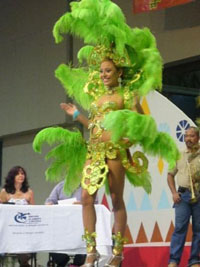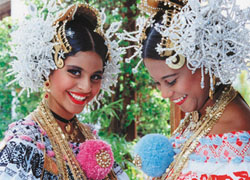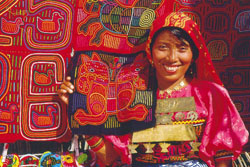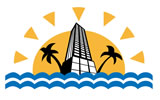History & Culture

The geographical position of Panama has determined the diversity of the ethnic composition of the population long ago. Panamanians are generally tolerant and friendly towards other nationalities, different appearances and religions.  The county’s population is a blend of races and nationalities from around the world. The major part of the population is “mestizo” (mixed Amerindian and white) 70%, Amerindian and mixed (West Indian) 14%, white 10%, Amerindian 6%. The Amerindian population includes seven indigenous peoples: Ngäbe, Kuna (Guna), Emberá, Buglé, Wounaan, Naso Tjerdi (Teribe), and Bri Bri. Panama also has one the largest Jewish communities in the region. Also this is home to many Chinese descendants and the capital has large and strong diaspora, most of grocery stores and laundries are owned by Chinese descendants. In recent years Panama has seen big inflow of people from Middle East and India, also it gains big popularity among Europeans and Americans. Mostly, Panamanians are tolerant to the people who decided to choose this country for a permanent stay, but we suggest avoiding criticizing any part of Panamanian culture, however it can be a good advice in any country.
The county’s population is a blend of races and nationalities from around the world. The major part of the population is “mestizo” (mixed Amerindian and white) 70%, Amerindian and mixed (West Indian) 14%, white 10%, Amerindian 6%. The Amerindian population includes seven indigenous peoples: Ngäbe, Kuna (Guna), Emberá, Buglé, Wounaan, Naso Tjerdi (Teribe), and Bri Bri. Panama also has one the largest Jewish communities in the region. Also this is home to many Chinese descendants and the capital has large and strong diaspora, most of grocery stores and laundries are owned by Chinese descendants. In recent years Panama has seen big inflow of people from Middle East and India, also it gains big popularity among Europeans and Americans. Mostly, Panamanians are tolerant to the people who decided to choose this country for a permanent stay, but we suggest avoiding criticizing any part of Panamanian culture, however it can be a good advice in any country.
Holidays and Festivals
Panamanians love holidays and fun on any occasion. The local people enjoy and celebrate a lot of holidays; many of them are public, religious and traditional. There is, for example, a wonderful tradition to celebrate maturity for girls – “Quince años” – “fifteenth birthday”, when the whole family, the birthday girl in a beautiful dress, all congratulate her that she became an adult, dance and have lots of fun.
 Another amazing impression, a national folklore dress – “pollera”. This is a colorful one-piece skirt made of cotton and wool with lots of decorations which are embroidered. Embroidery takes a long time and is usually very expensive. The cost of original folklore costume can be as high as $10,000 or more depending on the quality of decorations. It is usually accompanied by extraordinary hair ornament made of pearls other material. Such decoration can also be extremely expensive.
Another amazing impression, a national folklore dress – “pollera”. This is a colorful one-piece skirt made of cotton and wool with lots of decorations which are embroidered. Embroidery takes a long time and is usually very expensive. The cost of original folklore costume can be as high as $10,000 or more depending on the quality of decorations. It is usually accompanied by extraordinary hair ornament made of pearls other material. Such decoration can also be extremely expensive.
February is the month of Carnivals. Costumes, parades, rehearsals are planned in a great advance. The life literally stops for almost a week before the carnivals, nobody works. Carnivals are often closely tied with traditional folklore. Different cities get filled with costumes parades and contests and often hosts so-called “culecos”, water entertainment in the middle of the town.
 During January you may want to visit famous Coffee and flowers Fair in Boquete, Chiriqui. There are also a number of other festivals like San-Sebastian. In March we recommend to visit international fair in San Jose, in April – there are famous Semana Santa (local Easter) and Orchid Fair in Chiriqui. There are a number of other fairs in festivals throughout the year located all over the country.
During January you may want to visit famous Coffee and flowers Fair in Boquete, Chiriqui. There are also a number of other festivals like San-Sebastian. In March we recommend to visit international fair in San Jose, in April – there are famous Semana Santa (local Easter) and Orchid Fair in Chiriqui. There are a number of other fairs in festivals throughout the year located all over the country.
Among cultural events worth mentioning there is a celebration of San Juan de Bautista in July on Isla Grande and row competition in Taboga. September is famous for its Del Mar holiday in Bocas del Toro and there Black Christ festival in Portobello on October 21, which attracts pilgrims from all over the country.
Official holidays in Panama
- January 1, New Year's Day
- January 9, Martyrs' Day (Panama)≠
- Carnival's Monday. The Monday before Ash Wednesday.
- Carnival's Tuesday. The Tuesday before Ash Wednesday.
- Holy Friday - Good Friday - Death of Christ
- May 1, May Day - Labour Day
- July 1. (every 5 years) presidential inauguration
- November 3. Separation Day (from Colombia).
- November 4. Flag Day
- November 5. Colon Day
- November 10. "Primer Grito de Independencia de la Villa de los Santos" celebrating The Gesture of Rufina Alfaro and the uprising in the Villa de los Santos against Spain.
- November 28. Independence Day (from Spain).
- December 8. Mothers' Day.
- December 25. Christmas.
Lifestyle
Panama has always been a multinational country, that’s why local population is known for its extraordinary tolerance, friendliness and ability to absorb different cultures. There are mixed traditions and customs among Indians, Spanish and North Americans.
Greeting is done by shaking a hand. Close friends usually hug each other or in case of female, there can exchange kisses cheek to cheek. Usually the meeting begins with a small talk, but it doesn’t mean you have to answer that in detail, which may seem very clear for North American culture.
Style of clothing is usually very casual, especially considering the climate. However, official meetings assume suits, light shirt and trousers. Good shoes are considered as a good tone, flip-flops or similar shoes are widely discouraged. Panamanians love to dress nicely and generally pay huge attention to their look. Neat haircut for men and heavy make-up and flashy jewelry for women are widely accepted. Night time it is ok to dress in light jeans and clothes, but entering bar in shorts, sandals or flip-flops may be prohibited.
